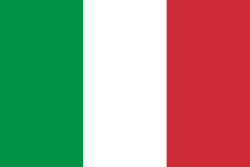Cape Verde, an archipelago off the coast of West Africa, is not just known for its stunning landscapes but also for its rich and diverse musical traditions. As the birthplace of renowned genres like morna and coladeira, it has an impressive musical heritage. However, among these vibrant musical traditions, there's one that's truly unique and captivating – Funaná.
At the Cultural Heritage Institute, our mission is to celebrate and preserve traditional music genres that have shaped Cape Verdean music over the years. Funaná, while a relatively recent addition to this musical tapestry, holds a special place in the hearts of Cape Verdeans and has made a significant impact on both national and international stages.
Funaná: A Musical Journey
Funaná's roots can be traced back to the 1960s, but it truly came into its own during the 1970s and 1980s when it gained recognition, thanks in part to the iconic Bulimundu group, led by the talented Engineer Carlos Alberto Martins, affectionately known as Katchás. The name Funaná is believed to have ethnographic origins, stemming from the combination of two key roles in the genre – the Fúna (accordion player) and the Naná (the wife who plays the ferinhu). While this hypothesis is fascinating, there's also an etymological interpretation presented by writer Félix Monteiro, suggesting that Funaná extends from the word "fungagá" or "fandango," which denotes a type of common music or ordinary philharmonic.
Rhythms and Dance of Funaná
One of the distinguishing features of Funaná is its binary rhythm, characterized by a double tempo that can range from slow to medium and even fast. This variable pace, which can shift from vivace to andante, adds to the genre's unique charm. Funaná is not just about music; it's also a dance genre. Typically, it's danced in pairs, with the dancers linking one arm and intertwining their hands in response to the rhythm.
Funaná has worn different names over the years, such as fuque-fuque or fuc-fuc, badju di gaita, ferinhu y feru-gaita, and, of course, Funaná. Its distinctive sound arises from the accordion (gaita) and the iron bar (ferrinho) – when combined, they create the unmistakable rhythm that Funaná is known for. Among its prominent figures is Nhu Kaitaninhu from Santa Catarina.
Variety in Funaná
Funaná, like other musical genres, has its variations. These include Funaná kaminhu di féru, Funaná maxixi, Funámba (a style reminiscent of samba), pilan-katuta (fast), and Funaná morno/lento, each with its unique flavor and style. The diversity within Funaná is a testament to the genre's adaptability and ability to evolve over time.
The Legacy of Funaná
Funaná has produced numerous talented figures who have made their mark on the Cape Verdean music scene. These artists include Antão Barreto, Caitaninhu, Codé di Dona, Séma Lópi, Bitori Nha Bibinha, Mémé Landin, Xandu Graciosa, Káká Barbosa, Txóta Soaris, Néné Morenu, Katxás, Norberto Tavares, Zeka di Nha Reinalda, Pantera, Belu Frêri, Bino Branco, Eduíno, Beto Dias, Kino Cabral, Gil Semedo, Gilito Semedo, Jorge Neto, Zé Espanhol, Zé Henriki, and many others. These artists have not only kept the Funaná tradition alive but also contributed to its ongoing evolution.
Funaná is not just a genre of music in Cape Verde; it's a cultural phenomenon, a reflection of the resilient spirit and vibrant identity of the Cape Verdean people. As we continue to explore the world of Funaná, we invite you to delve into the music and culture of Cape Verde, where the beats of Funaná tell a story of a nation's history, resilience, and passion for life.
Contact us to organise your adventure trip to Cape Verde.

